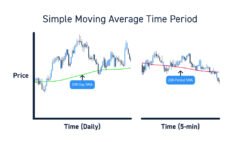Crypto Trading for Traditional Investors: What You Need to Know
Crypto Trading for Traditional Investors: What You Need to Know
Introduction
Cryptocurrencies like Bitcoin and Ethereum continue to capture headlines and the interest of traditional investors. The potential for significant returns, a decentralized structure, and innovative underlying technology make crypto an intriguing asset class. However, the fast-paced, highly volatile, and often unregulated nature of crypto markets presents unique challenges and requires a different approach than traditional investing.
Key Differences Between Crypto and Traditional Markets
- Volatility: Cryptocurrencies experience dramatic price fluctuations far exceeding those of traditional assets like stocks or bonds.
- Regulation: The regulatory landscape for crypto is still evolving, with varying rules across jurisdictions. This brings additional legal and security risks.
- Market Hours: Crypto markets operate 24/7, unlike stock markets with set trading hours. This means prices can shift rapidly at any time.
- Technology and Storage: Understanding blockchain technology, wallets, and secure storage of crypto holdings is essential.
Before You Start Trading Crypto
-
Solid Educational Foundation
- Blockchain Basics: Understand the underlying technology and how different cryptocurrencies function.
- Types of Cryptocurrencies: Research beyond Bitcoin. Explore altcoins like Ethereum, Solana, stablecoins, and their use cases.
- Exchanges and Wallets: Learn about centralized and decentralized exchanges, hot wallets vs. cold wallets, and best security practices.
-
Risk Tolerance Assessment
- Crypto is a high-risk asset class. Be honest with yourself about how much volatility you can stomach.
- Only invest what you can afford to lose, especially as you’re starting out.
-
Develop an Investment Strategy
- Short-term vs. Long-term: Will you day trade, swing trade, or focus on the long-term potential of specific crypto projects?
- Fundamental Analysis: Assess a project’s whitepaper, team, utility, tokenomics, and community support.
- Technical Analysis: Learn to read crypto charts, identify patterns, and utilize indicators if you plan to actively trade.
Approaches for Traditional Investors Entering Crypto
- Dollar-Cost Averaging (DCA): Invest a fixed amount at regular intervals to mitigate the impact of volatility and build a position over time.
- Index Funds: Cryptocurrency index funds provide exposure to a basket of crypto assets, offering some diversification.
- Grayscale Trusts: Trusts like the Grayscale Bitcoin Trust (GBTC) offer indirect exposure to crypto through traditional brokerage accounts.
- Indirect Investment: Consider stocks of companies heavily involved in blockchain technology, crypto mining, or exchanges.
Navigating Crypto Trading
-
Choosing an Exchange
- Centralized Exchanges (CEX): Platforms like Coinbase or Binance offer user-friendly interfaces but you don’t control your private keys.
- Decentralized Exchanges (DEX): Like Uniswap, these allow peer-to-peer trading without a central authority but require greater technical knowledge.
-
Security First
- Not Your Keys, Not Your Coins: For large holdings, consider cold storage (hardware wallets) for enhanced security.
- Two-Factor Authentication (2FA): Essential for exchange accounts and wallets.
- Beware of Scams: Crypto is rife with phishing attempts, fake projects, and social engineering scams. Be extremely vigilant.
-
Managing Emotions
- Crypto is notorious for inducing fear and greed. Have a plan, set stop-losses, and avoid impulsive reactions to news or hype.
-
Tax implications
- Understand the tax laws in your jurisdiction regarding crypto gains, losses, and trading.
Additional Considerations
- Evolving Landscape: Crypto is still a young asset class. Regulations, technology, and use cases continue to develop rapidly.
- Diversification Remains Key: Don’t abandon your traditional portfolio. Crypto should ideally be a smaller, calculated portion of your overall investments.
- Constant Learning: This is a space where the learning never stops. Dedicate yourself to staying updated on news and developments
Resources for further exploration
- CoinMarketCap or CoinGecko: Websites to track crypto prices, market caps, and project information https://coinmarketcap.com/ https://www.coingecko.com/
- Reputable News Sources: Coindesk, Decrypt https://www.coindesk.com/ https://decrypt.co/
- Communities and Forums: Find reputable online communities or subreddits specific to the projects that interest you.
Conclusion
Crypto trading offers exciting potential but also carries significant risk. Traditional investors entering this space must approach it with a measured strategy, robust research, and a focus on security. By understanding the differences, managing risks, and continuously educating yourself, you can make informed decisions about incorporating cryptocurrency into your investment journey.








